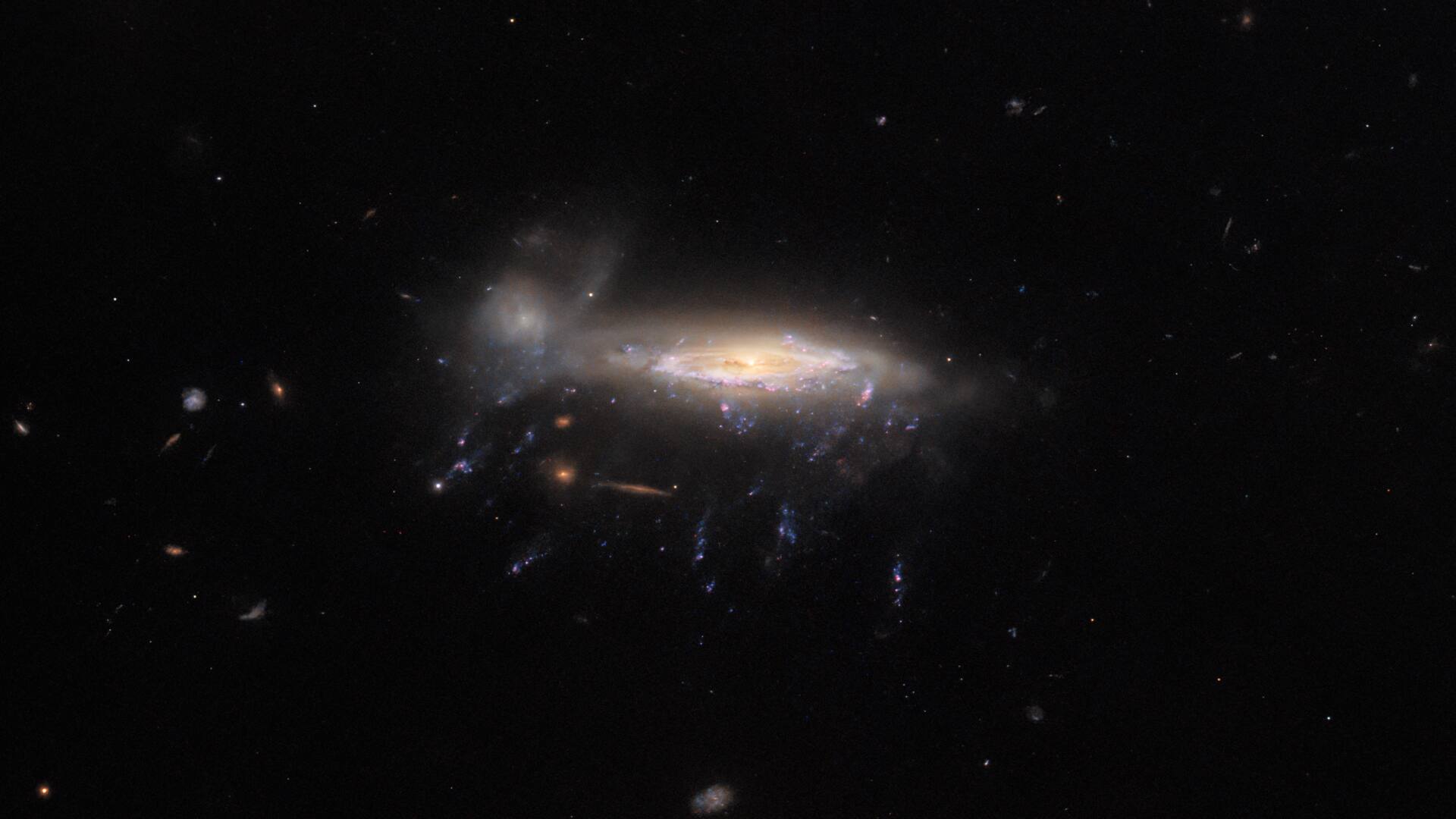
NASA's Hubble telescope spots 'jellyfish galaxy' 600 million light-years away
What's the story
NASA's Hubble Space Telescope has captured an intriguing 'jellyfish galaxy.'
It has been so named because of the bright strings of gas that are similar to "floating jellyfish tentacles" and can be seen trailing down from the central bright core of the galaxy.
Dubbed JO204, the cosmic object is located in the constellation Sextans, about 600 million light-years from the Earth.
Context
Why does this story matter?
The Hubble telescope, which launched in April 1990, has studied over 40,000 cosmic objects. It has provided views that cannot be obtained from the ground and one among them is the latest discovery of JO204 galaxy.
Jellyfish galaxies are a type of galaxy found in galaxy clusters. The gases being stripped away from these galaxies leave behind long tails, giving them a distinctive appearance.
Image
A faint, dim galaxy is seen toward the left
The jellyfish galaxy, surrounded by a hazy glow, takes the center stage in the image. The background is dark and only a few other stars and small galaxies are seen.
The spiral-shaped galaxy appears to be tilted in the image, and the bright core and the galaxy's spiral arms are also visible.
Toward the left, a faint and dim galaxy appears to touch JO204.
Information
Downward gas channels are formed due to ram pressure stripped
The image was taken as part of a survey conducted to shed light on star formation under extreme conditions. The channels of gas, which looks like "floating jellyfish tentacles," streaming downward from JO204 is actually due to a process called "ram pressure stripping."
Explanation
What is ram pressure stripping?
Jellyfish galaxies are subjected to ram pressure because of their movement against the intergalactic medium that occupies the spaces between galaxies in a galaxy cluster, explains European Space Agency (ESA).
Due to this movement, the galaxies experience intense pressure, and as a result, the more loosely bound gas is stripped away. For better understanding, imagine you are facing a strong gust of wind.
Analogy
The colder and denser gas is mostly stripped away
In this case, the wind is the moving fluid. Similarly, the ram pressure strips away the less tightly bound gas from the galaxy, which leaves behind trails like "jellyfish's tendrils."
"This gas is mostly the colder and denser gas in the galaxy— gas which, when stirred and compressed by the ram pressure, collapses and forms new stars in the jellyfish's beautiful tendrils," said ESA.